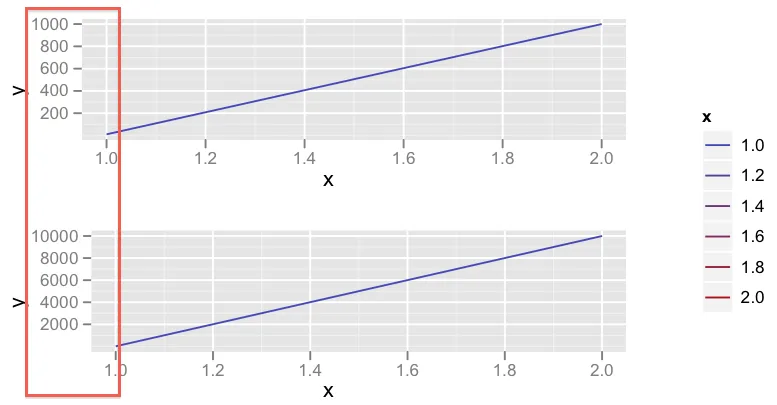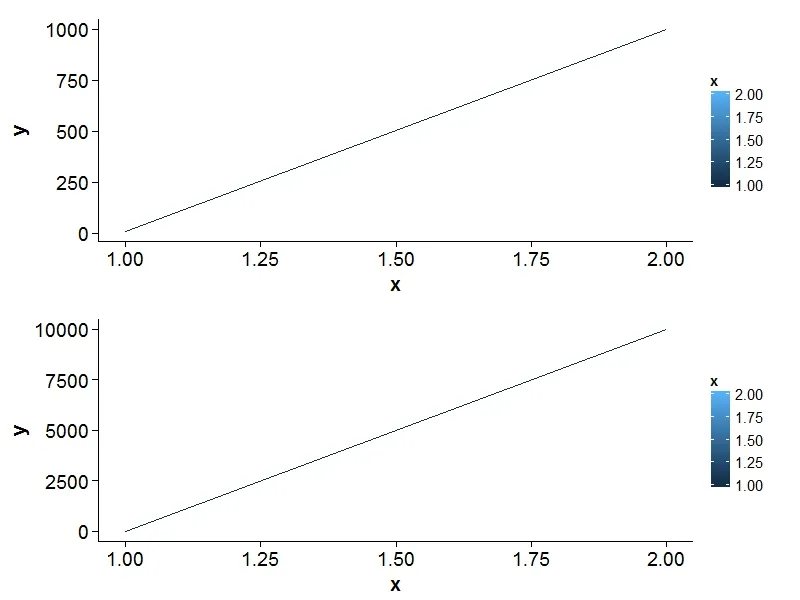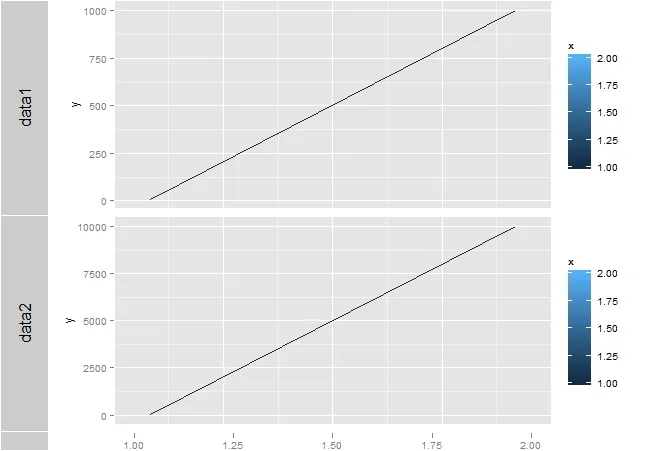背景
我想在同一页上绘制两个具有相同图例的ggplot2。 http://code.google.com/p/gridextra/wiki/arrangeGrob 中提到了如何做到这一点。这看起来已经很好了。但是...... 在我的示例中,我有两个具有相同x轴和不同y轴的绘图。当y轴的范围至少比另一个绘图高10倍时(例如10000而不是1000),ggplot2(或grid?)无法正确对齐绘图(请参见下面的输出)。
问题
如何使用两个不同的y轴也对齐绘图的左侧?
示例代码
x = c(1, 2)
y = c(10, 1000)
data1 = data.frame(x,y)
p1 <- ggplot(data1) + aes(x=x, y=y, colour=x) + geom_line()
y = c(10, 10000)
data2 = data.frame(x,y)
p2 <- ggplot(data2) + aes(x=x, y=y, colour=x) + geom_line()
# Source: http://code.google.com/p/gridextra/wiki/arrangeGrob
leg <- ggplotGrob(p1 + opts(keep="legend_box"))
legend=gTree(children=gList(leg), cl="legendGrob")
widthDetails.legendGrob <- function(x) unit(3, "cm")
grid.arrange(
p1 + opts(legend.position="none"),
p2 + opts(legend.position="none"),
legend=legend, main ="", left = "")
输出


